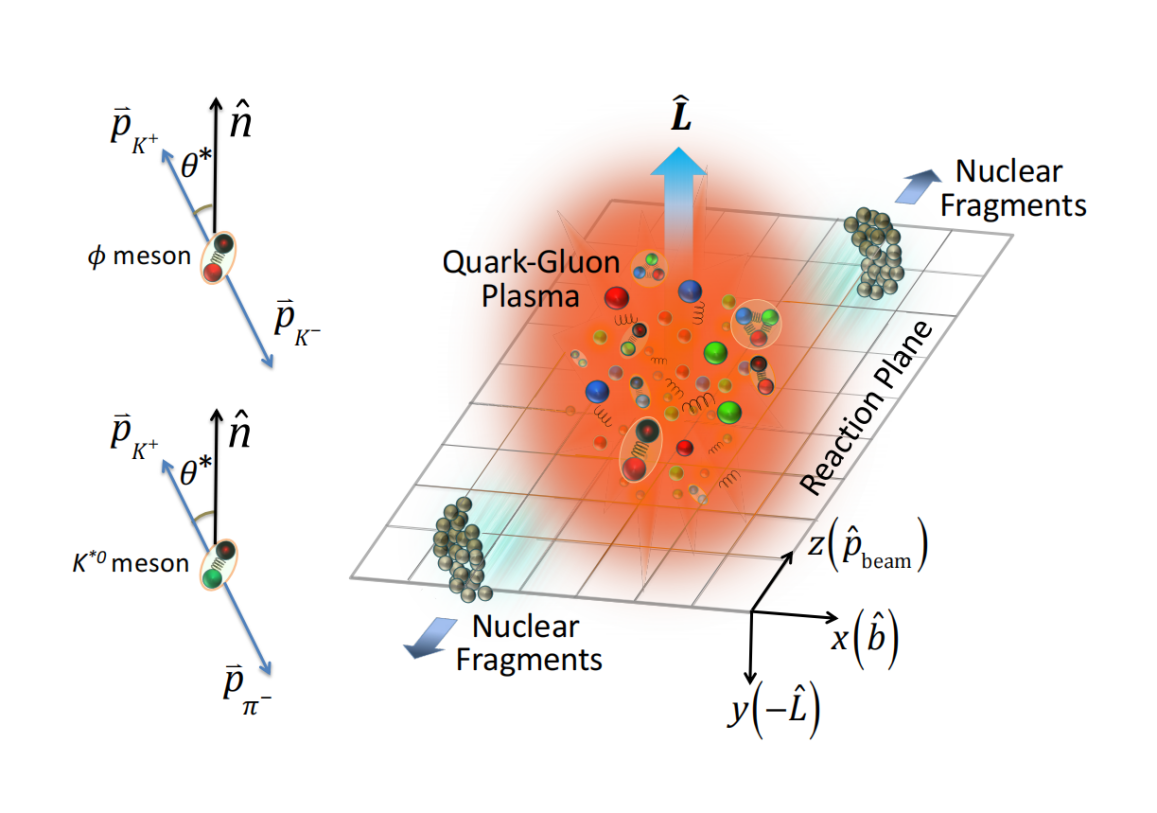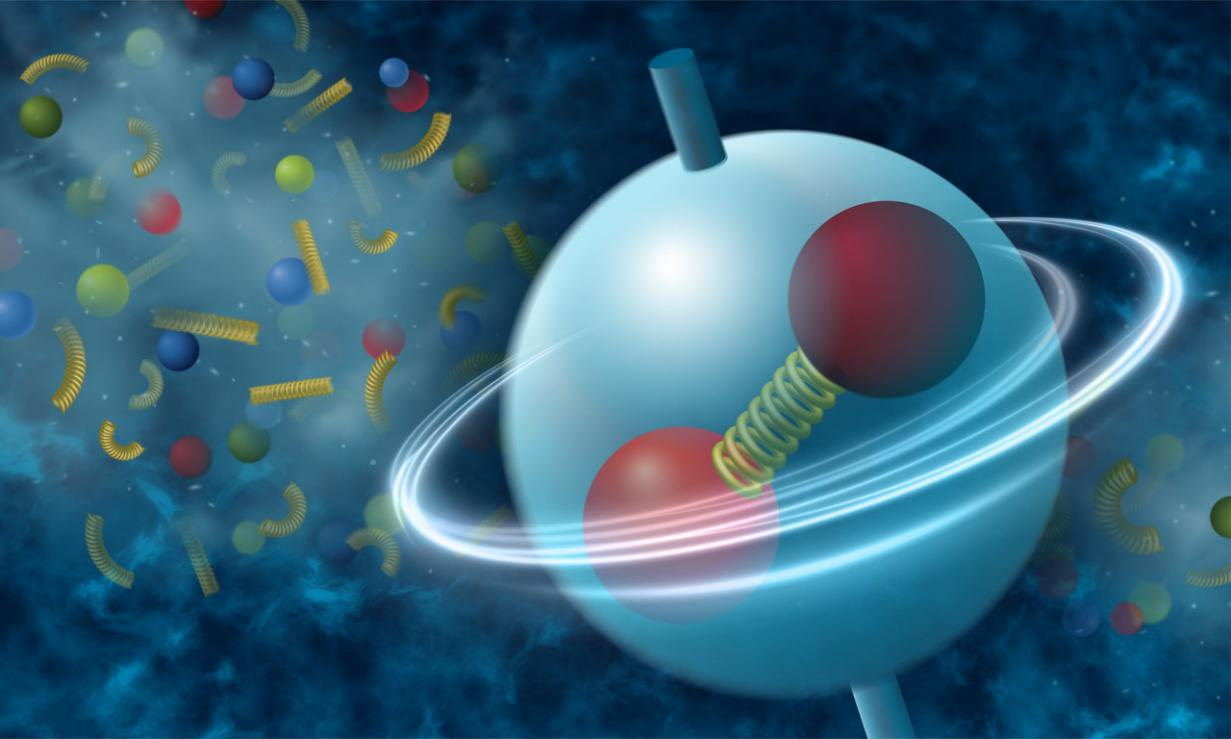Physicists from STAR Collaboration have reported the first observation of the global spin alignment signal in heavy-ion collisions. Published in Nature on January 18, the study provides a potential new avenue for understanding the strong interaction at work at the sub-nucleon level. This analysis was performed by the researchers at the Institute of Modern Physics of the Chinese Academy of Sciences, Fudan University, Brookhaven National Laboratory, Kent State University and the University of Illinois Chicago.
As its name implies, the strong force is the strongest of the four fundamental forces in nature. It’s what holds together the building blocks of atoms—the protons and neutrons that make up atomic nuclei, as well as their inner building blocks, quarks and gluons.
At the Relativistic Heavy Ion Collider (RHIC) at Brookhaven National Laboratory, heavy ions (e.g., gold nuclei) are accelerated to close to the speed of light and collide from opposite directions. The collisions “melt” the boundaries of individual protons and neutrons, setting free the quarks and gluons normally confined within to create a quark-gluon plasma (QGP).
In collisions that are not exactly head-on, the colliding system generates a very large orbital angular momentum (OAM). Part of the OAM is transferred to the preferential alignment of the spin of particles along the OAM direction. Since the STAR detector couldn’t directly measure the spin direction, the physicists measured the spin alignment of these particles by tracking the distribution of their decay products relative to the direction perpendicular to the reaction plane of the colliding nuclei.
In this study, the researchers measured the spin alignment of the phi and the K*0 mesons. For these particles, there are three possible orientations along the OAM. If no special physics mechanism presents, the probability of each of these three states should be equal to one-third.
The researchers found that there is no preference for the K*0 mesons. However, the phi mesons show a strong signal of global spin alignment, which increases with decreasing collision energy, clearly indicating that they prefer one state over the other two. It is the first time ever that such an alignment is observed in the heavy-ion collisions.
The surprising spin-alignment pattern and magnitude for phi mesons cannot be explained by conventional mechanisms, such as the magnetic field strength, vorticity or fragmentations of polarized quarks.
Theorists recently came up with the idea that local fluctuations in the strong force within the quark-gluon plasma could be driving the phi mesons’ apparent spin alignment preference. This explanation is still under debate and further experimental verification is needed. This connection, if fully established, will open a potential new avenue for studying the behavior of strong force fields.
DOI: https://doi.org/10.1038/s41586-022-05557-5

Figure 1. A schematic view of the coordinate setup for measuring global spin alignment in heavy-ion collisions. (Image from Nature)

Figure 2. The phi meson in the quark-gluon plasma. (Image from Brookhaven National Laboratory)
Contact :
LIU Fang
Institute of Modern Physics

